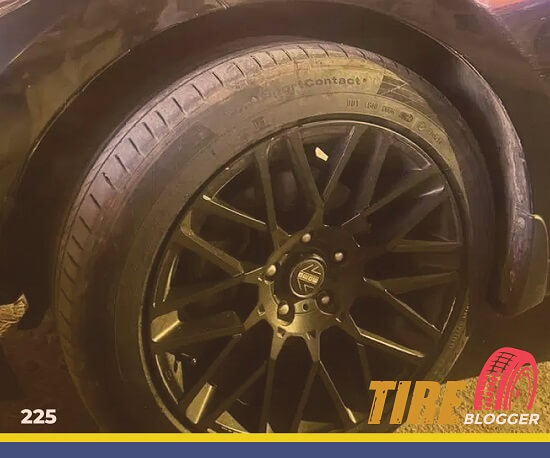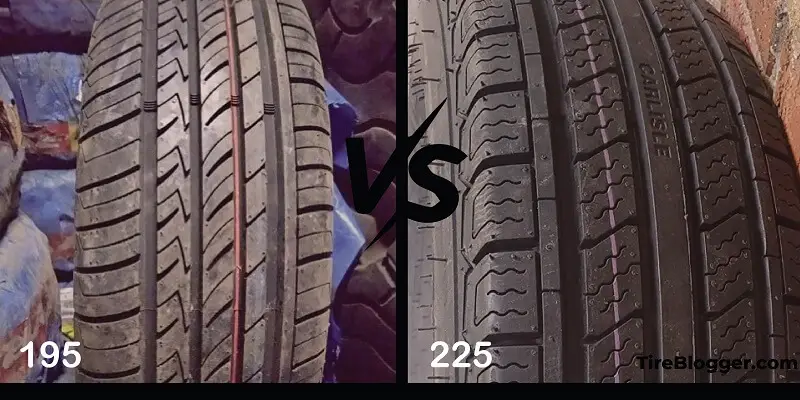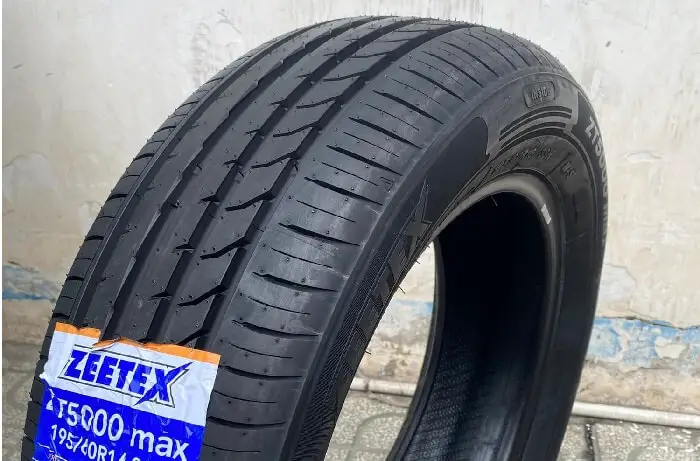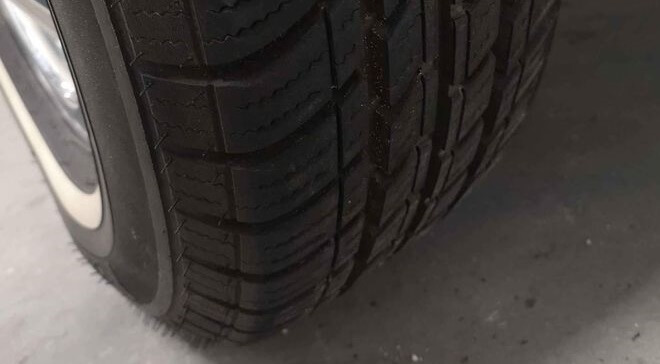195 vs 225 Tires

The main difference between tire sizes 195 and 225 is the tire’s width. The 225 tire size is 30 millimeters wider than the 195 tire size.
The number in a tire size represents the width of the tire in millimeters, so a tire size of 195 means that the tire is 195 millimeters wide, while a tire size of 225 means that the tire is 225 millimeters wide.
195 vs 225 Table
To identify key differences between tire sizes, we will compare two tires, a 195 tire size, and a 225 tire size.
| Tire Size 195 | Tire Size 225 |
|---|---|
| Narrower 7.68 inch tread width | Wider 8.86 inch tread width |
| Improved gas mileage from smaller contact patch | Reduced gas mileage from larger contact patch |
| Lower ground clearance risks damage on rough roads | Higher ground clearance for off-road obstacles |
| More responsive handling on pavement | Added stability on loose and uneven surfaces |
| Quieter ride on smooth roads | Increased noise from wider tread |
| Smoother ride on highways and city streets | Comfortable ride over rough terrain |
| Even tread wear and longer life | Built tougher to handle impacts |
| Better snow and ice traction | Improved traction in mud and gravel |
| Streamlined, sleek aesthetics | Aggressive, bold off-road look |
Ground Clearance
Larger 225 tires offer greater ground clearance than 195, benefiting off-road driving by avoiding obstacles. However, the increased clearance may lower speedometer accuracy.
Smaller 195 tires sit lower, risking damage on rough terrain. But, they provide accurate speedometer readings and a lower center of gravity for better on-road handling.

Gas Mileage
The 195’s smaller contact patch and lower weight improve gas mileage, which is ideal for daily driving and long trips. In contrast, the 225’s bigger size and added weight reduce efficiency through increased rolling resistance and rotational mass. Overall, the narrower 195 promotes better fuel economy.
Ride Comfort
The 225’s taller sidewalls and increased air volume provide a comfortable ride over rough surfaces by absorbing impacts. But the 195 offers a smoother highway and city ride. The 225 excels on uneven terrain, while the 195 suits paved roads.
Aesthetics Look
The narrower 195 tire maintains a streamlined, aerodynamic appearance. The wider 225 looks more aggressive and robust but hinders aerodynamic efficiency slightly. The 195 promotes sleek aesthetics, while the 225 provides a bold, off-road look.

Handling & Stability
The 195’s narrower tread enhances responsiveness and handling on pavement but could be more stable off-road.
The 225’s wider tread provides added traction and stability on loose surfaces while sacrificing some on-road agility. Overall, the 195 suits performance driving on pavement, while the 225 excels off-road.
Noise & Vibration
The 195 transmits more irregular road vibrations but is quieter on smooth roads. The 225’s wider tread produces a louder road noise, but its larger air chamber dampens vibrations better. Overall, the 195 is smoother on-road, while the 225 isolates off-road bumps better.
Durability & Wear
The narrower 195 tires may exhibit more even tread wear and marginally longer life. The heavier 225 is built tougher to handle impacts, but its weight could increase driveline wear. Overall, the lighter 195 has a slight durability advantage for normal driving.

Adverse Conditions
The narrower 195 can cut through to the road better but with less traction in snow. The wider 225 tread provides better traction in mud, gravel, and light off-road conditions. Overall, the 225 is preferred for wet, muddy, and off-road situations.
Difference Between 195 and 225 Tires
The main difference between 195 and 225 tires is their section width, with 225 tires being 30mm wider than 195 tires. This difference in width affects various aspects of tire performance, handling, and fitment.
Can I Use 195 Tires Instead of 225?
It is possible to use 195 tires instead of 225 tires, as the ideal rim width range for 195 tires overlaps with the range for 225 tires. However, several key considerations must be taken into account.
It’s crucial to ensure that the new tires’ aspect ratio and rim diameter align with your current configuration. If these don’t match exactly, the overall diameter difference should remain within 3% to maintain speedometer accuracy and optimal vehicle performance.

Can I Use 225 Tires Instead of 195?
Yes, you can use 225 tires instead of 195 tires, as the ideal rim width range for 225 tires overlaps with the range for 195 tires. That being said, some vital points need evaluation.
Matching the aspect ratio and rim diameter of new tires to your current ones is essential. In cases where they don’t align perfectly, ensure the overall diameter difference stays below 3% to avoid impacting speedometer precision and vehicle efficiency.
Can I Put 195 Tires on 225 Rims?
Yes, you can put 195 tires on rims designed for 225 tires, as the ideal rim width range for 225 tires (6.5-8.0 inches) overlaps with the range for 195 tires (6.0-7.5 inches).

Can I Put 225 Tires on 195 Rims?
It is possible to put 225 tires on rims designed for 195 tires, as the ideal rim width range for 195 tires (6.0-7.5 inches) overlaps with the range for 225 tires (6.5-8.0 inches).
Our Observation
After comparing these two tire sizes, I’m convinced the choice depends heavily on the intended use. For daily commuting and street performance, I favor the 195 for its improved gas mileage, handling, and smoother ride.
The 195’s narrower tread and shorter sidewalls promote responsiveness and efficiency on paved roads. However, I recommend the more rugged 225 tires for off-road adventures over uneven terrain.
Its wider tread and taller sidewalls provide added traction and stability when navigating gravel, mud, and bumpy trails. The ideal tire comes down to matching priorities and driving conditions.

Meet Caitlin McCormack, a Tire Size Expert and Blogger Passionate About Everything Related to Tires. With Years of Experience in the Tire Industry, Caitlin Has Become an Expert in Tire Sizes and Their Impact on Vehicle Performance.
